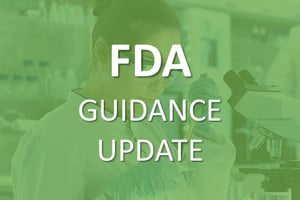1 min read
SCOPE: Powering the Future of Clinical Research
Meet Veristat at SCOPE: Powering the Future of Clinical Research February 2-5, 2026
🔬 Advancing Clinical Research with...
2 min read
For the past 60 years, US law has empowered the FDA to require that clinical trial sponsors submit data from “preclinical tests ” to prove their drug is safe enough to advance to testing in humans. At the close of last year, Food and Drug Omnibus Reform Act (FDORA) replaced the term “preclinical tests” with the newly defined term “nonclinical tests.” The law defines this term as “a test conducted in vitro, in silico, or in chemico, or a nonhuman in vivo test that occurs before or during the clinical trial phase of the investigation of the safety and effectiveness of a drug.” The revision is meant to encourage the use of alternatives to animal testing, not eliminate animal testing altogether.
Looking at current industry standards, companies use tens of thousands of animals for preclinical tests each year, yet more than 9 out of 10 drugs that enter human clinical trials fail. Clearly, animal models are far from perfect when it comes to predicting either the safety or efficacy of a given drug in humans. Nevertheless, animal testing has provided great information in many of its applications, particularly when it can be used to eliminate drug products from consideration or guide the selection of starting doses for clinical trials. It is worth noting that the FDORA defines that animal testing is no longer a uniform requirement across all drug products; however, it does not eliminate animal testing completely. Sponsors must still provide sufficient data to justify their proposed clinical studies. Consequently, the FDA may still expect animal testing for some products and some sponsors may still find it the most useful and efficient way to determine a safe starting dose and assess mechanism of action.
humans. Nevertheless, animal testing has provided great information in many of its applications, particularly when it can be used to eliminate drug products from consideration or guide the selection of starting doses for clinical trials. It is worth noting that the FDORA defines that animal testing is no longer a uniform requirement across all drug products; however, it does not eliminate animal testing completely. Sponsors must still provide sufficient data to justify their proposed clinical studies. Consequently, the FDA may still expect animal testing for some products and some sponsors may still find it the most useful and efficient way to determine a safe starting dose and assess mechanism of action.
Allowing the FDA to clear a drug for human trials without requiring animal testing paves the way for use of more advanced technology and alternative approaches for the development and evaluation of novel therapies and treatments. It creates an opportunity for companies to evaluate whether animal models are the right, most appropriate place to test the toxicity of their new product - and determine a more efficient route forward for product development.
What remains to be seen is when and how are the new pathways for preclinical testing better than animal testing? Will these methods reduce the number of drug failures in clinical study? Will there be an impact to the total number of products evaluated in humans? Could there be a change in the risk of false-negatives, where the product would have worked but the potential effect is not detected in the preclinical models, and therefore the product is not brought to human clinical study?
Regardless of the context of US law, no single approach to nonclinical development will be universal. Selections of testing methods and model systems should be made based on the scientific rigor of the methods and the most appropriate option for the specified product. It is unknown how quickly the new law will change expectations from FDA, but it will open the way for FDA and pharmaceutical or biotechnology companies to have a serious discussion about the most appropriate method for preclinical research. As in other new clinical development advancements, big change will require the investment of time and resources to deliver on its full potential.
Learn More
1 min read
Nov 20, 2025 Veristat Events
🔬 Advancing Clinical Research with...
1 min read
Oct 22, 2025 Veristat Events
Veristat is excited to attend the ASH Annual Meeting and...